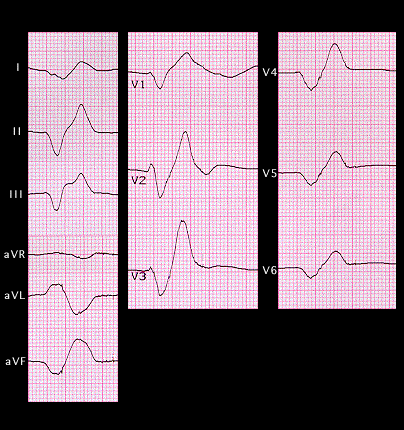
The tracing shown here is from a 22 year old male patient with end stage renal disease. His arterial pH was 7.1 and the serum potassium concentration was 9.1mM. P waves can no longer be identified and there is diffuse widening of the QRS complex which measures 0.28 seconds. The onset of the T wave merges with the end of the QRS complex and the T waves themselves are peaked. This is the tracing of profound hyperpotassemia, often with acidosis. It is a medical emergency and if not treated immediately, will progress to asystole or ventricular fibrillation.
